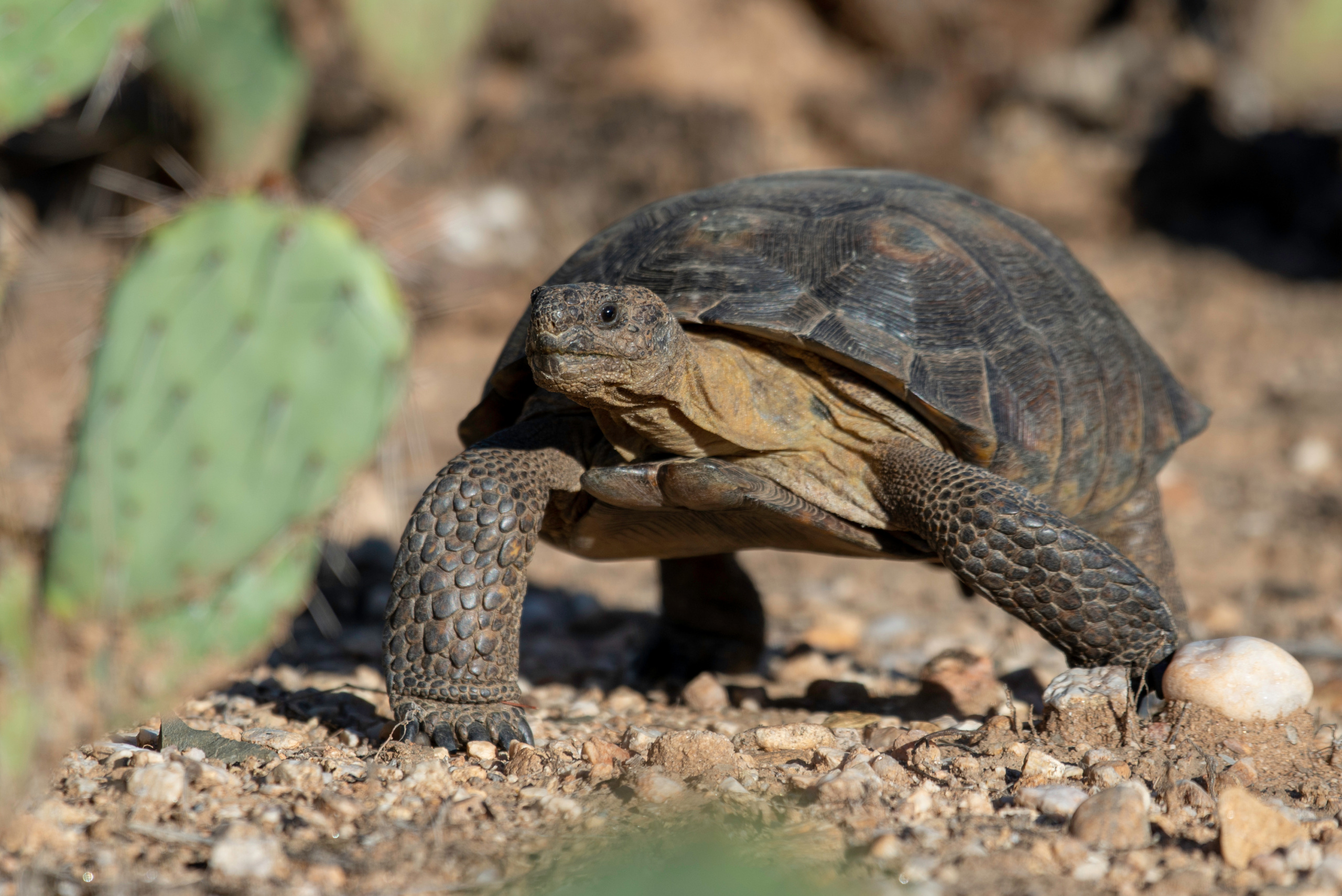
Tell President Biden: Protect California’s Chuckwalla Bench
The Chuckwalla National Monument would create a continuous wildlife corridor from Joshua Tree into Arizona, protecting this unique desert ecosystem from development.
Add your name
State Director, Environment California
This California desert looks deceptively barren. At first glance, the only movement you can make out are the waves of heat dancing across the desert floor.
Look closely, though, and you’ll realize that the Chuckwalla Bench, located in southern California, is teeming with life: Camouflaged critters dart between rocks and rare desert plants paint the ground with vivid color.
From the charismatic chuckwalla lizard and lightning-fast sonoran pronghorn to the lethargic desert tortoise, this ecosystem hosts a variety of sensitive wildlife species. Many species of plants and animals that call this place home cannot be found anywhere else on Earth.
Under the Trump administration, Chuckwalla Bench was threatened by development and mining claims. Now, we’re joining tribes and a coalition of local groups calling on President Biden to designate the Chuckwalla National Monument, which would permanently protect about 660,000 acres of public lands.
Chuckwalla bench is located southeast of Joshua Tree National Park. It lies within the Sonoran Desert in California and is surrounded by wilderness areas such as the Palo Verde and Chuckwalla Mountains.
From Los Angeles, the Chuckwalla bench can be reached by car in a little over 3 hours. From San Diego, the drive time is around 4 hours. If you’re driving west from Phoenix, the proposed monument can be reached in just over 3 hours.
Combining two expansive federally protected areas — Joshua Tree National Park and the proposed Chuckwalla Bench National Monument — would help ensure more access to nature for residents of Blyth, the Eastern Coachella Valley and other local communities.
Joshua Tree is adored by many for the wide range of outdoor activities it offers. From camping and hiking to stargazing and wildlife photography, the park has it all. The proposed Chuckwalla National Monument would expand this beloved desert wilderness. Just imagine: Following a winding desert wash in solitude or admiring wildlife from remote desert peaks.
Monument status would mean permanent protection for critical habitat for wildlife such as the desert tortoise. The Chuckwalla Bench supports one of the greatest densities of desert tortoises in the world. Listed as “threatened” on both the California and federal endangered species lists, the biggest threat facing the desert tortoise is habitat loss. In order to protect the desert tortoise, we need to protect where it lives.
Many other species, including the desert rosy boa snake and burrowing owl, also live in the Chuckwalla Bench. The area is also notable for its rare desert plants, colorful sands, and dark night skies.
Federal protection for the Chuckwalla Bench will also create a permanently protected wildlife corridor that connects habitats from Joshua Tree National Park all the way to the Kofa National Wildlife refuge across the Arizona border. This uninterrupted stretch of protected land would give many species the space they need to migrate, hunt and find mates.
We live in the country that created the world’s first national parks. It’s time to lean into our nation’s long legacy of conservation and protect the special natural places that we love, both for our own enjoyment and for the sake of the amazing animals that inhabit them.
Let’s continue to honor this legacy by protecting this precious desert wilderness.
We’re calling on President Biden to designate the Chuckwalla Bench as a national monument in order to protect this sensitive environment from destructive development. Join us by sending a message today.
State Director, Environment California
Started on staff: 2002
UC Davis 1997-2001
Laura directs Environment California’s work to tackle global warming, protect the ocean, and stand up for clean air, clean water and open spaces. Laura served on the Environment California board for two years before stepping into the state director role. Most recently, she directed the public health program for CALPIRG, another organization in The Public Interest Network, where she led campaigns to get lead out of school drinking water and toxic chemicals out of cosmetics. Prior to that, Laura ran Environment California citizen outreach offices across the state and, as the Environment California field director, she led campaigns to get California to go solar, ban single use plastic grocery bags, and go 100 percent renewable. Laura lives with her family in Richmond, California, where she enjoys hiking, yoga and baking.
